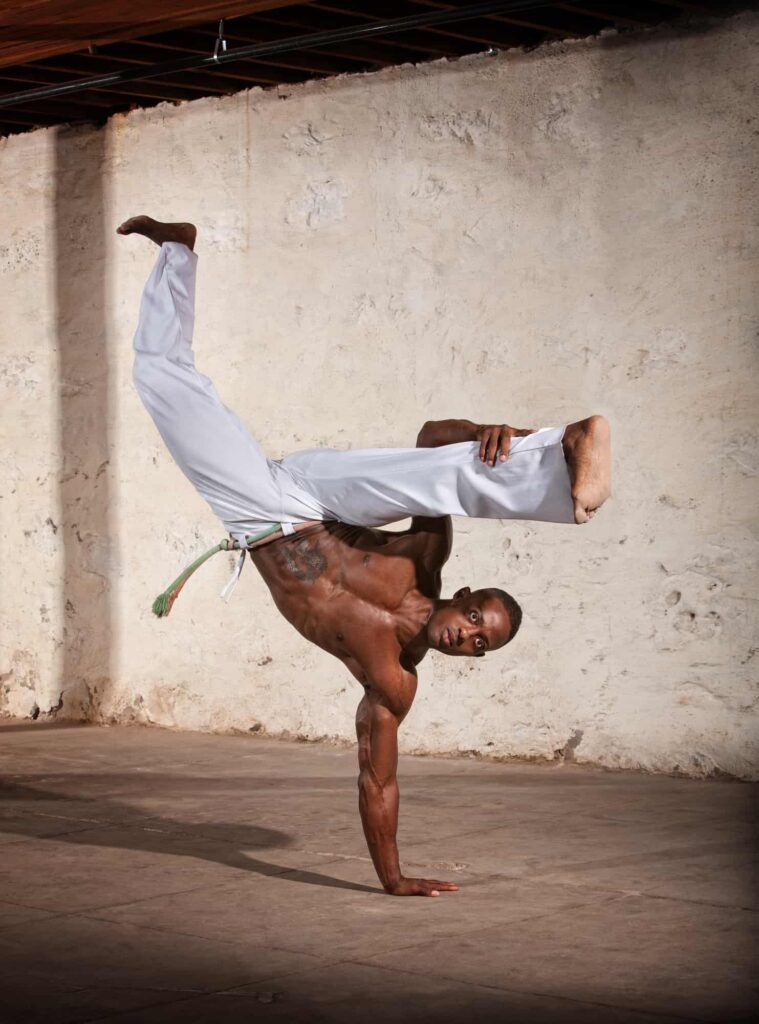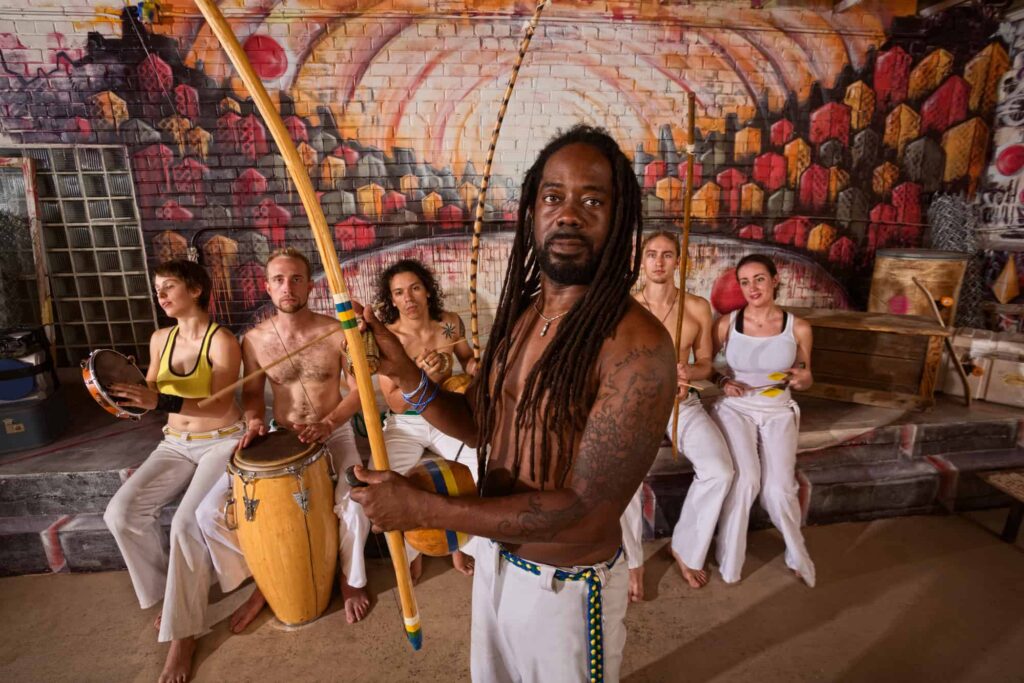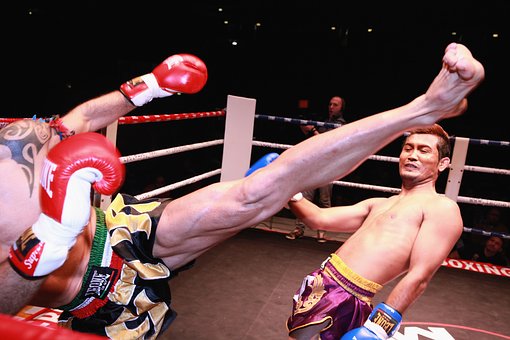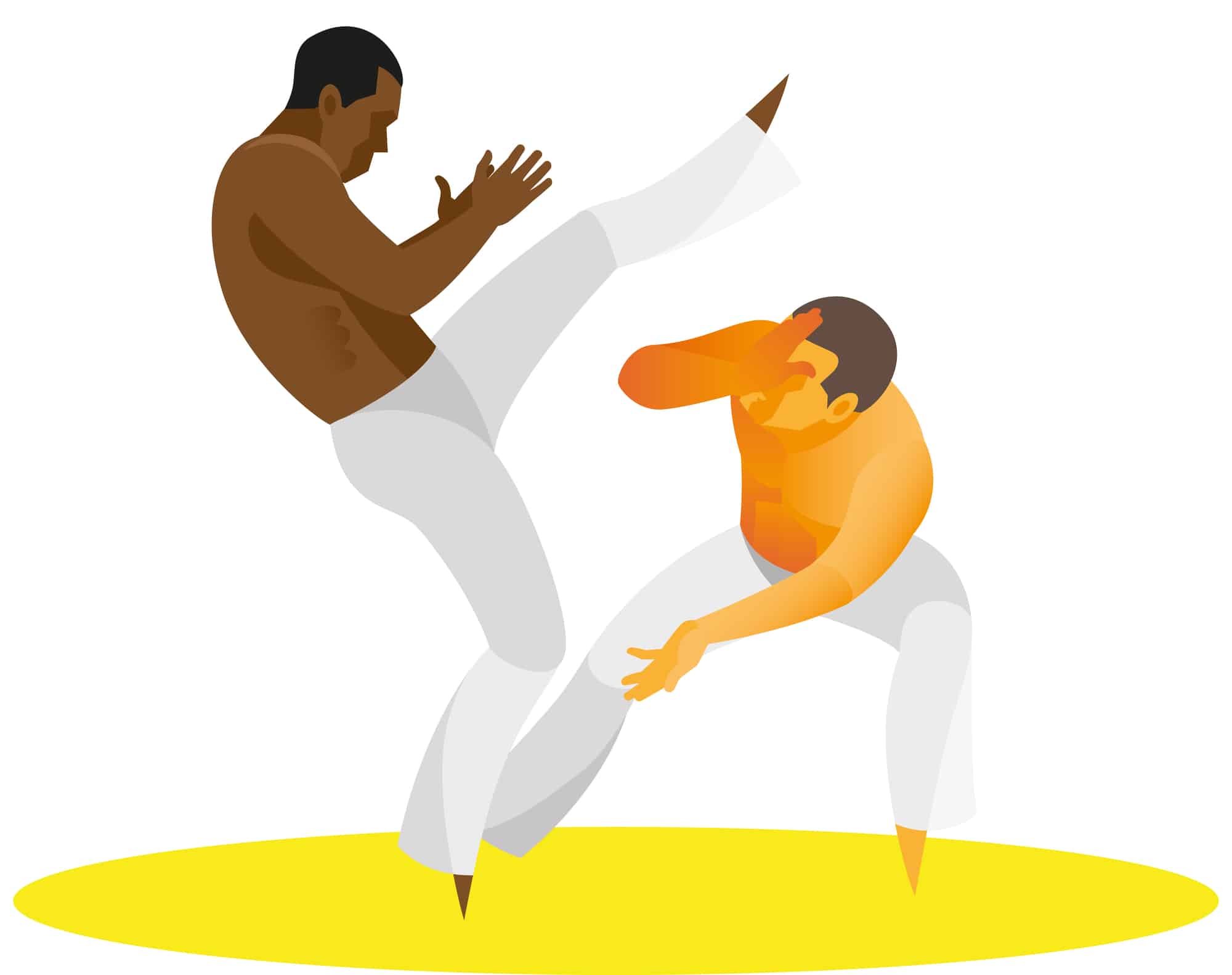Capoeira vs Muay thai; which style is more effective?
Which style is more suited to self defense and which style is better for me to learn and train?
This is exactly what will be discussed in this post on capoeira vs muay thai.
We also look at:
- the origins or capoeira vs muay thai
- techniques and training – capoeira vs muay thai
- famous fighters in both styles
Origins – Capoeira vs Muay thai
Capoeira is an Afro-Brazilian martial art that combines elements of dance, acrobatics, and music. Its origins can be traced back to the period of slavery in Brazil during the 16th to 19th centuries.
Capoeira was developed by enslaved Africans brought to Brazil, primarily from regions in West and Central Africa, such as Angola and Congo.
These Africans were subjected to harsh conditions and were forbidden from practicing their traditional martial arts.
As a result, they disguised their combat techniques within the framework of dance and music, creating what is now known as capoeira.

Muay thai originates from the battlefields of the warring periods of the Siam Kingdom or Ancient Thailand.
Muay boran or ‘Ancient Boxing’ was the earliest origins of Muay thai and was the unarmed combat component of the fighting styles trained and practiced by Thai warriors.
Muay boran is also known as fighting Art of 9 Limbs as it includes headbutts, while Muay thai is today referred to as the ‘Art of 8 Limbs’ which includes 2 Fists, 2 Elbows, 2 Legs and 2 Knees.
Muay thai came about as a ring sport when it took on many of the rules used by Western Boxing under the Queensbury rule set which includes weight classes, timed rounds and protective gear like gloves (among other rules).
Techniques & Philosophy – Capoiera vs Muay Thai
Capoeira encompasses a wide range of techniques and has a unique philosophy that distinguishes it from other martial arts, including muay thai.
These include:
Music and Singing
Capoeira is accompanied by music and singing, which play a vital role in its practice.
A circle of musicians, known as a roda, provides the rhythmic foundation using instruments like the berimbau (a musical bow), atabaque (drum), pandeiro (tambourine), and agogô (bell).

Singers engage in call-and-response chants, while the rhythm and energy of the music influence the tempo and style of the capoeira game.
Acrobatics
Capoeira incorporates acrobatic movements, such as flips, cartwheels, handstands, and aerial kicks.
These acrobatic elements add flair, agility, and unpredictability to the martial art, showcasing the athleticism of capoeiristas.
Philosophy and Cultural Expression
Capoeira has a rich philosophy that emphasizes values such as respect, discipline, community, and self-expression.
It is deeply rooted in Afro-Brazilian culture and history, serving as a form of resistance and empowerment for marginalized communities.
Capoeira promotes social integration, personal growth, and the preservation of cultural heritage.
Muay Thai is mainly concerned with fighting in the ring
The main philosophy and attributes of muay thai lie in combat and fighting especially in ring sport competition where techniques are trained in order to win a competitive match.
Whether that be by scoring more opponents than your opponent, causing enough damage to make them quit or knocking them out in order to win a fight.
Main Differences – Capoiera vs Muay Thai
There are some very striking differences between capoeira and muay thai.
These include:
Evasiveness vs Blocking
Capoeira techniques are often executed in combination with fluid transitions and deceptive feints, making it challenging for opponents to predict and counter.
Capoeiristas also incorporate evasive movements, dodges, and cartwheels to avoid attacks.
Muay thai on the other hand tends to focus more on blocking attacks and standing your ground rather than avoiding or evading attacks in the manner practiced in capoeira.

Evasiveness still is an important part of muay thai but not to the extent that deceptive and evasive moves are practiced in capoeira.
A muay thai fighter would much prefer to block and counter or take a shot in order to get their own attack off on the opponent as opposed to outright completely avoiding an attack.
Competition vs Creativity
Muay thai is a competitive ring combat sport and operates under rules based on Western Boxings Queensbury rules set.
At the end of a muay thai fight there is always either a Winner/Loser or it is a Draw.
Capoeira is traditionally practiced in a non-competitive manner.
The capoeira game in the roda focuses on showcasing skill, creativity, and improvisation rather than winning or losing.
Which Style is Better for Self Defense or Fighting?
To be honest this question should be fairly obvious.
Muay thai is a ring proven combat sport, so when it comes to fighting, muay thai is the obvious choice.
For self defense also, muay thai is pretty much more of an obvious choice for a number of reasons, the main one being that the techniques and training strategies are ring tested for many decades and are proven effective.
Capoiera is not considered by many to be an effective style for self defense becasue:
Lack of Emphasis on Direct Striking
While capoeira includes striking techniques, its primary focus is not on direct and efficient striking like some other martial arts.
It may not have the same level of precision and power in striking as disciplines solely dedicated to that purpose, such as boxing or Muay Thai.
Limited Grappling and Ground Fighting
Capoeira generally does not emphasize grappling or ground fighting techniques, which are important aspects of self-defense.
Without proficiency in these areas, capoeiristas may face challenges if a confrontation goes to close-quarters combat or goes to the ground.
Unrealistic Training Scenarios
Traditional capoeira training often involves cooperative and choreographed movements in the roda.
While this can enhance skills such as timing, flow, and creativity, it may not fully prepare practitioners for the chaotic and unpredictable nature of real-life self-defense situations.

Lack of Sparring
Capoeira’s non-competitive nature and focus on the roda may result in less emphasis on full-contact sparring and testing techniques against resisting opponents.
This can limit the practical application of capoeira techniques in realistic self-defense scenarios.
Which is Better to Learn and Train?
Which is better to learn and train, Capoiera vs Muay Thai?
This all depends on the individuals goals in learning martial arts.
If general health and fitness is your main goal then there is no reason why you shouldn’t learn and train both styles if you have the time and resources and access to schools and instructors to learn from.
If self defense is your main goal then we have discussed above why muay thai may be the preferred option if you wish to learn how to fight or defend yourself in real life situations.
If competitive fighting is your main goal, whether that be in MMA, Kickboxing or Muay thai itself , then muay thai again is the obvious choice.

When it comes to weight loss, it is really tough to beat muay thai.
The gruelling training sessions and inclusion or aerobic and anaerobic cardio as well as bodyweight callisthenics in the hundreds or reps, as well as the heavy bag/pad work, sparring and clinching are scientifically proven to burn a tonne of calories.
But capoiera also offers numerous benefits for those wanting to lose weight and get in shape.
The acrobatic moves in capoiera require the development of core strength, flexibility and agility – all physical attributes that when trained will help a person to get in great shape by virtue of practicing and training to execute these techniques.
But again if general health and fitness is your goal it would benefit you to check out both styles if possible and see which fits your liking more.
You are more likely to stick with something if you enjoy it.
And martial arts are no different.



